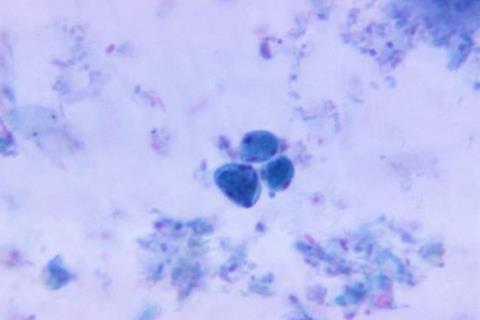Blastocystis, the world’s most common protist - a form of unicellular microscopic organism - in the gut is made up of many sub-species, known as subtypes.
Depending on the subtype (ST) of Blastocystis that is present in a person, it can lead to a healthy gut in some individuals, and gut problems in others.

In Singapore, a rare subtype, Blastocystis ST7, is commonly found in patients with diarrhoea. Blastocystis ST7 is more common in Asia than in the West. This observation, along with other supporting studies, suggests that Blastocystis ST7 causes gut disease in humans. However, the way it causes disease has been a mystery.
Molecular level
To find out how Blastocystis ST7 causes gut disease, a team of researchers led by Professor Nicholas Gascoigne, Department of Microbiology and Immunology at the Yong Loo Lin School of Medicine, National University of Singapore (NUS Medicine), and Associate Professor Kevin Tan, from the same department, investigated the biology of Blastocystis ST7 at the molecular level. This work is published in The EMBO Journal.
The study conducted by Dr Lukasz Wojciech, first author of the paper and Senior Research Fellow from the Department of Microbiology and Immunology at NUS Medicine, revealed that gut disease is caused by Blastocystis ST7, which synthesises a substance during its metabolism, called indole-3-acetyldehyde (I3AA).
“I3AA is produced in very few organisms. It binds to immune cells in the gut, which reduces the gut’s tolerance for gut bacteria, causing the immune system to flare up even when exposed to normal gut bacteria. I3AA also promotes gut inflammation by inhibiting the protective properties of an important class of immune cells (regulatory T cells), while stimulating inflammation through another class of immune cells (T helper 17 cells) in the gut,” said Dr Wojciech.
Rare metabolite
“From a biological perspective, this is the first time that a rare metabolite, I3AA, has been studied in detail, and is shown to promote inflammation,” said A/Prof Tan.
The researchers also found that some bacteria are useful in negating the effects of I3AA in the gut. One of them is a probiotic group known as lactobacillus - commonly found in foods like yoghurt, cottage cheese, sourdough bread, and more. It is able to regulate immunity and aid with gastrointestinal diseases.
Thus, a way to potentially cure patients from Blastocystis ST7-associated diarrhoea could therefore be to supplement one’s diet with foods that contain lactobacilli.
“Based on our findings, it is important to identify the specific subtypes involved in Blastocystis-related diseases, as some subtypes are harmful, while others are not. This can potentially result in clearer and more accurate diagnosis and treatment for patients. Our team is currently working on further studies on this. We will be investigating if I3AA production is unique to ST7 and can be used as a biomarker of disease. We are also exploring if certain strains on lactobacilli are able to prevent Blastocystis ST7 inflammatory effects on the host,” said Prof Gascoigne.







No comments yet